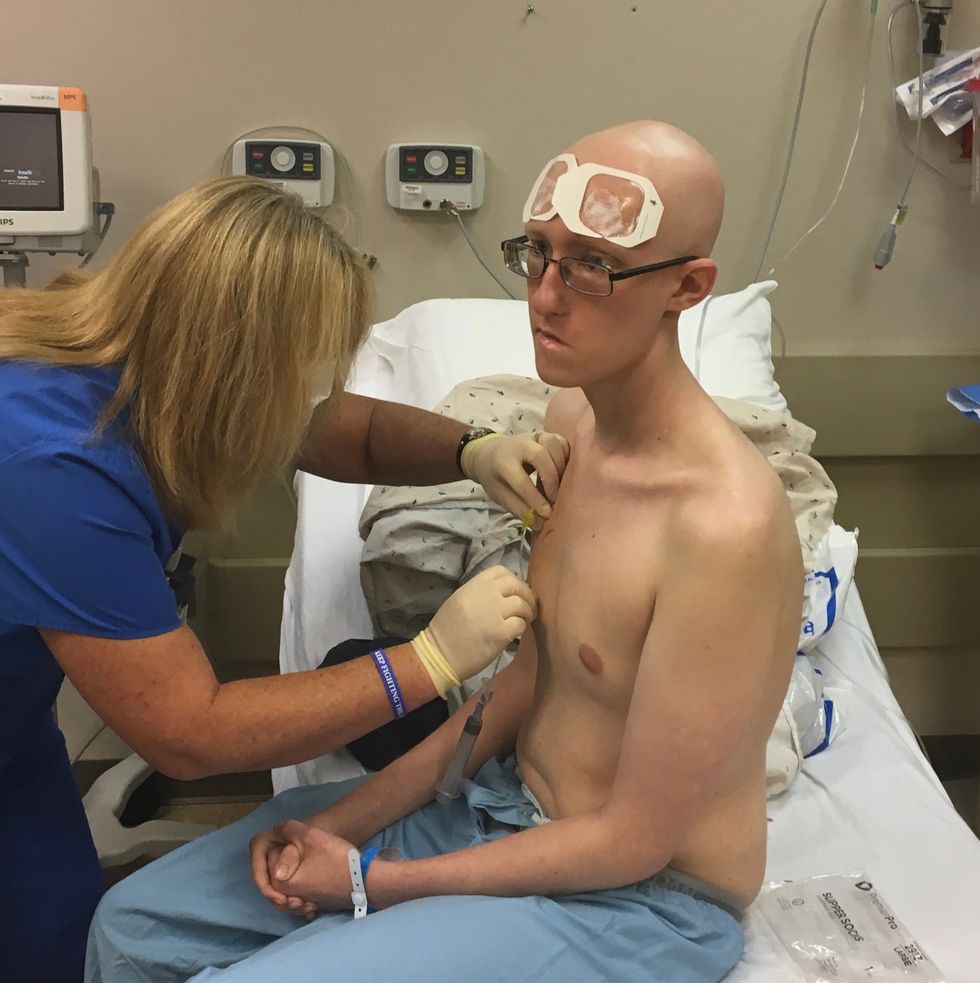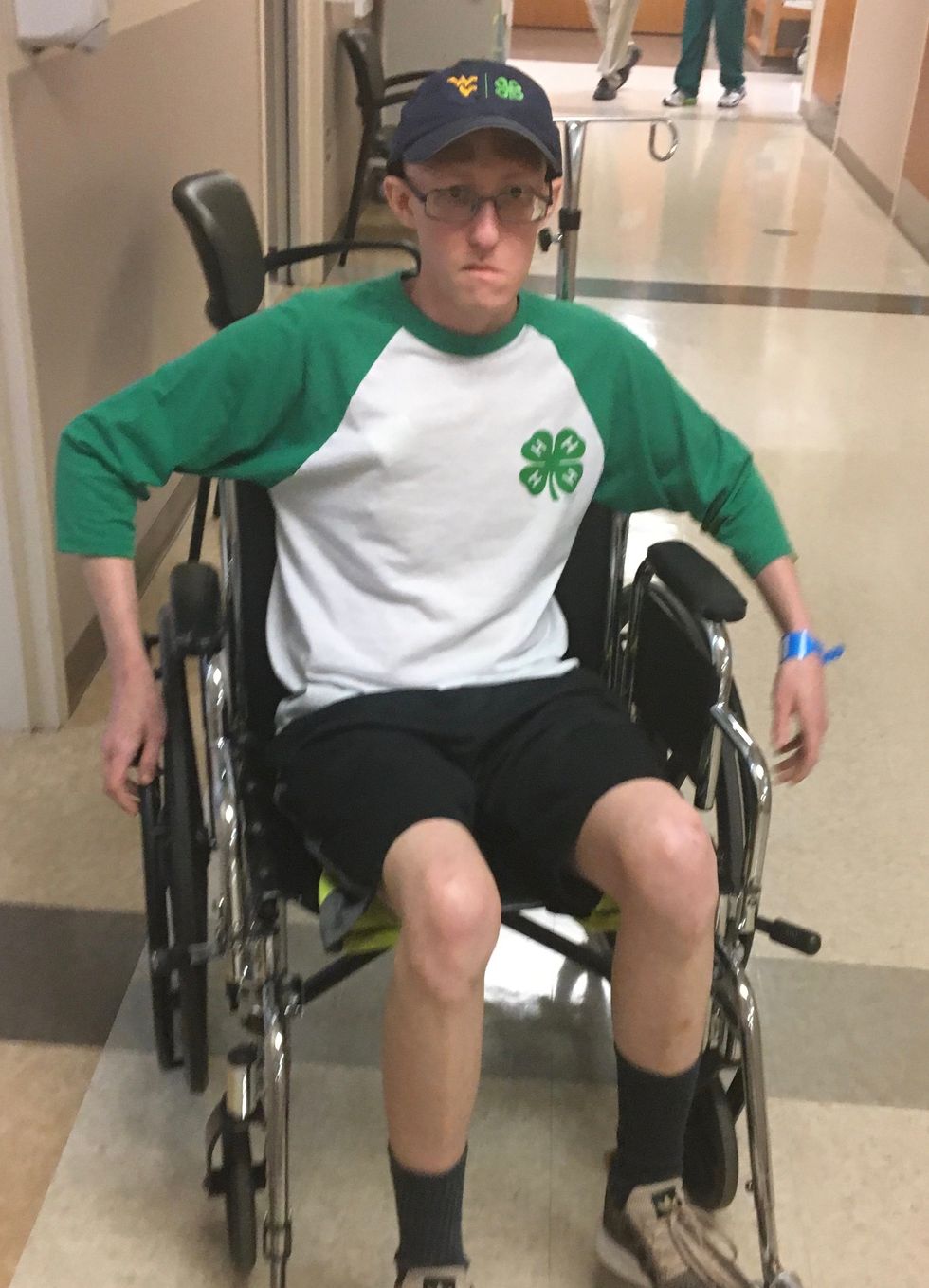Gamma Knife Radiosurgery is one of the many (and coolest) ways to help in cancer treatment. Words like "gamma" and "radiosurgery" may sound scary to many. The procedure's title can mislead you by implying that the doctors are cutting into a patient, but that would be wrong. Today, I'll attempt to give you an idea of what the surgery is like–through my own experience and what doctors may tell you.
What does Gamma Knife Radiosurgery do?

Unfortunately, you won't turn into a giant, green, angry monster. But Gamma Knife stops cell growth by changing the DNA of the targeted tumor. With the cells of the tumor stopped dead in their tracks they, well, die. (Yay!!) The surgery is not just for killing cancer. Here are some common diseases treated by Gamma Knife Radiosurgery:
-Malignant and benign tumors: Cancerous and noncancerous tumors.
-Arteriovenous malformation: Abnormal tangles of arteries and veins in the brain.
-Trigeminal neuralgia: Damage to the nerve controlling function and movement of the forehead, cheek, and jaw bone. Trigeminal neuralgia causes shocking pain in those areas.
-Acoustic neuroma: Noncancerous tumor on the nerve controlling hearing and balance. This nerve goes directly to the brain.
-Pituitary tumors: The pituitary gland controls things such as stress levels, appetite, and sexual function.
What is the procedure like?

The process begins with the placement of the head frame. Doctors use it to secure the patient's head. This way, the high dose of radiation hits its target and does not miss. If it were to miss, it would affect healthy tissue and cause damage.
The next step is to scan the brain with the frame in place to locate the tumor and calibrate the machine to fire! Two different scans are taken: An MRI and a CT scan are laid one over another to gain precision accuracy.
Next, the team of doctors works to find the correct angles and coordinates, assuring that each of the 200 lasers will meet at one point (the tumor).
Typically, only one hour of planning is required before it is time to get into the machine.
The patient is laid down on a table similar to an MRI table. The frame is then secured and the patient is moved into the machine. The procedure is silent and has no smell. It can take anywhere from 15 minutes to two hours.
My procedure took 45 minutes.
Post-Gamma Knife Radiosurgery

Once you get pulled out of the machine, it's time to get that big metal frame off your head! After that, ointment and band-aids are used to help in the healing process. You may feel a little loopy or have a small headache.
Now, you bust out of the hospital and can return to normal activities, except driving. During the frame placement, a light anesthesia was used to reduce pain.
Patients will have another scan and follow-up with the lead doctors in two months. This time period allows for the Gamma Knife Radiosurgery to work its magic on the tumor. Unlike other brain surgeries, the surgeons do not need to crack the skull open to physically remove the tumor. Instead, the tumor shrinks over time.
Risks and side-effects

With all surgeries, there are risks, but thanks to extensive research, Gamma Knife is one of the safest that doctors have. Here is a list of the common and uncommon side effects.
-Headaches: Pressure headaches are the most common side-effect. They are an after-effect from having the frame placed and removed. These headaches can be treated with pain medicines like Ibuprofen and Tylenol.
-Dizziness: This is another side-effect caused by the frame placement, but is also from lying down flat for so long. If you are not confident to walk around, a wheelchair can be helpful. Just take it easy until the symptoms have passed!
-Bleeding from pin spots: You can experience bleeding from the pin spots or "oozing", as my nurse described it. It is very uncommon, but bleeding on the brain can occur. It could potentially cause seizures or even strokes. If you're concerned, contact your doctor!
That's really it, as far as side-effects.
Now what?

For many, this may be the final step in getting them healthy. For others (like me), more treatment is needed. Cancer is like a person that really needs to be put in there place, so you hit it with everything—including the kitchen sink! Maybe the next step is chemotherapy, or maybe the next step is to sit and watch it. These are calls made by you and your team of doctors. The ultimate goal is to get healthy!
Alright, there you go. Hopefully, you know a little more about how Gamma Knife Radiosurgery is done and how it works to save lives. Here are a few more images from my surgery and around the internet to help your understanding
First, I'll include a few photos: One of the frame before being placed and while it's being set up!
And here's a photo of me, all set to break out of the hospital!



















